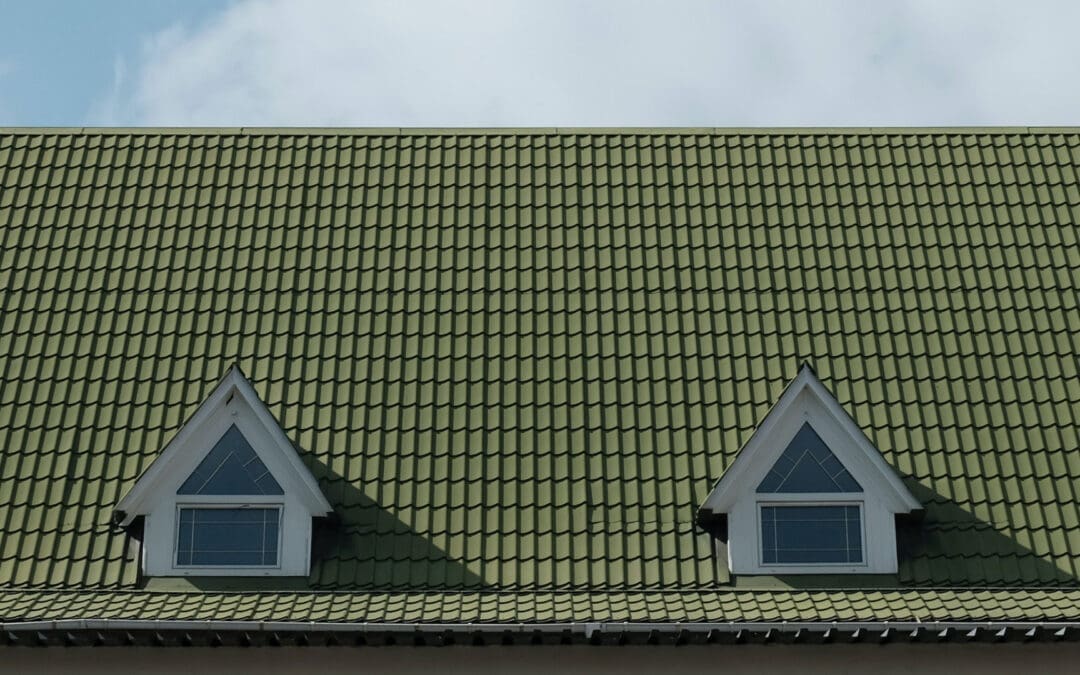How do you pick a roof style?
When it comes to selecting the ideal roofing material for your home or property, the multitude of options available can be daunting. Each type of roofing material has its unique benefits and drawbacks, and understanding these can be pivotal in making an informed decision. In this article, we’ll dissect the pros and cons of popular roofing materials: asphalt, clay tile, slate, cedar shake, synthetic, copper, metal, and stone-coated steel roofs.
1. Asphalt Shingles
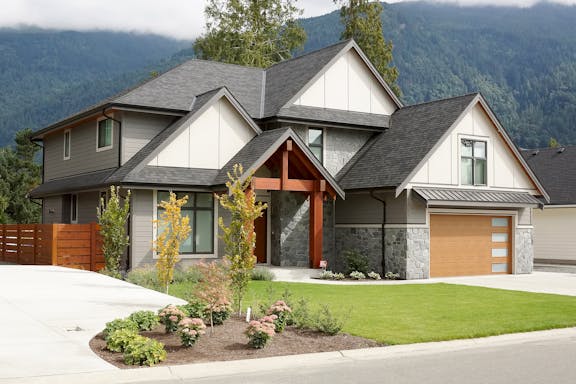
Pros:
- Cost-Effective: Among the most affordable roofing materials available.
- Versatility: Comes in a variety of colors and styles to match different architectural designs.
- Ease of Installation: Installation is straightforward, reducing labor costs.
- Maintenance: Minor repairs are relatively easy and cost-effective.
Cons:
- Durability: Less durable than some other materials, typically lasting 20-30 years.
- Environmental Concerns: Often made from petroleum, making them less eco-friendly.
2. Clay Tile Roofs

Pros:
- Longevity: Can last over 50 years with proper maintenance.
- Aesthetic Appeal: Offers a distinct and elegant look, particularly for Mediterranean or Spanish-style homes.
- Fire Resistance: Naturally fireproof.
Cons:
- Weight: They’re heavy, possibly requiring additional support.
- Cost: More expensive than asphalt shingles.
- Fragility: Tiles can break when walked on or during severe weather.
3. Slate Roofs

Pros:
- Natural Beauty: Offers a classic, sophisticated appearance.
- Durability: Can last up to 100 years or more.
- Eco-friendly: Natural material that doesn’t deplete resources.
Cons:
- Expense: One of the most expensive roofing materials.
- Weight: Like clay, it’s very heavy, potentially requiring structural reinforcements.
- Specialized Installation: Requires skilled craftsmen for installation.
4. Cedar Shake Roofs
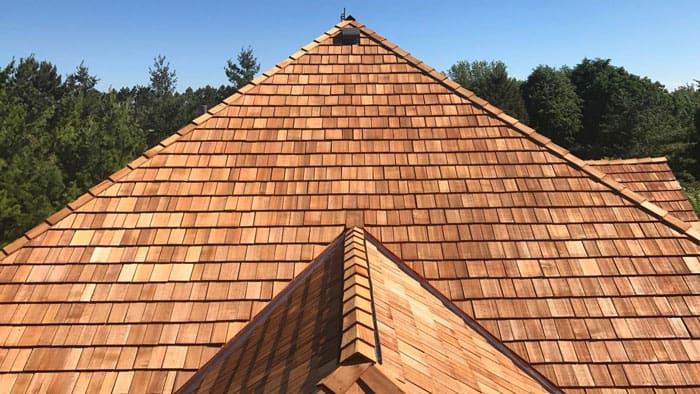
Pros:
- Natural Insulation: Cedar provides natural insulation, potentially lowering energy costs.
- Aesthetic Appeal: Offers a rustic, charming appearance.
- Eco-Friendly: Biodegradable and sourced from sustainable forests.
Cons:
- Maintenance: Requires more maintenance to prevent moss, mold, and mildew.
- Fire Concerns: Unless treated, cedar is flammable.
- Expense: Costs more than asphalt.
5. Synthetic Roofs

Pros:
- Versatility: Can mimic the look of slate, cedar, or other materials.
- Lightweight: Easier on the home’s structure.
- Durability: Resistant to elements and can last a long time.
Cons:
- Perception: Some purists might not like the ‘faux’ appearance.
- Environmental Concerns: Some synthetic materials may not be eco-friendly.
- Variable Quality: Quality varies among manufacturers, which might affect durability.
6. Copper Roofs

Pros:
- Longevity: Can last over a century.
- Unique Appearance: Develops a beautiful patina over time.
- Lightweight: Doesn’t strain the structural integrity of buildings.
Cons:
- Cost: Among the most expensive roofing materials.
- Noise: Can be noisy during rain or hail.
- Expansion & Contraction: Changes in temperature can lead to expansion and contraction, requiring special installation techniques.
7. Metal Roofs
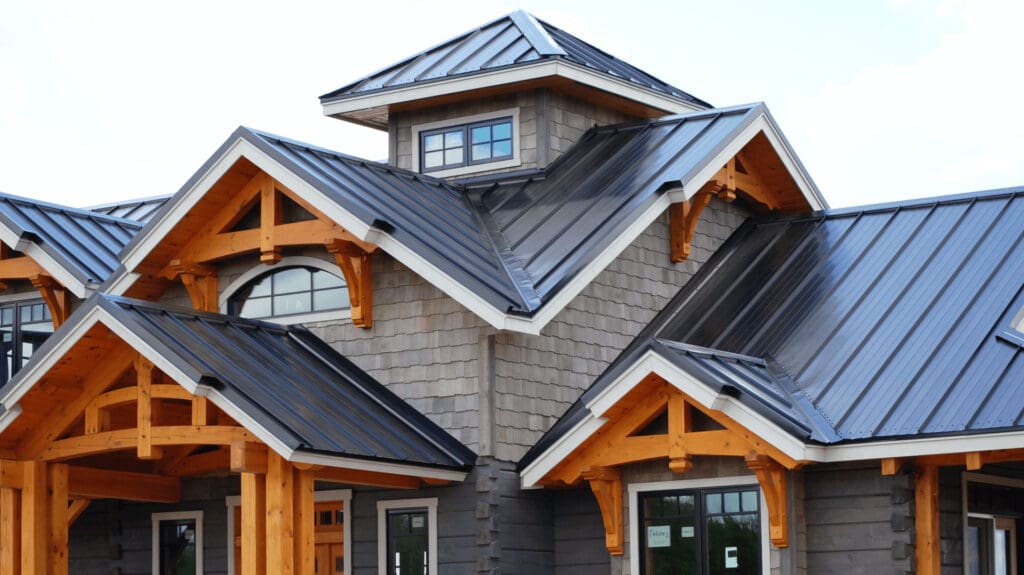
Pros:
- Durability: Can last 40-70 years, depending on the material.
- Energy Efficiency: Reflects sunlight, reducing cooling costs.
- Safety: Fire-resistant and can handle severe weather.
Cons:
- Cost: More expensive than asphalt or wood.
- Noise: Rainfall can be louder compared to other roofing materials.
- Denting: Can dent during severe hail.
8. Stone-Coated Steel Roofs
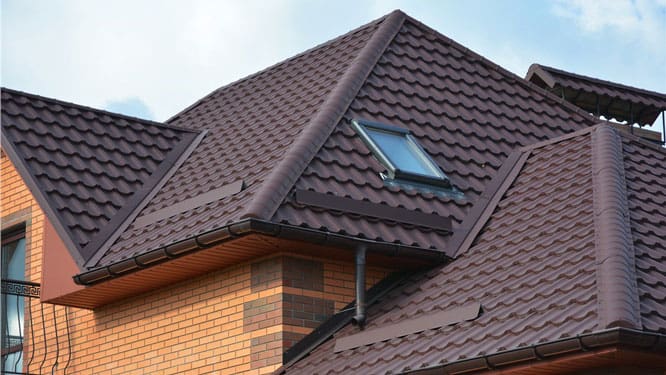
Pros:
- Lifespan: Durable and can last a long time.
- Weather Resistance: Resistant to harsh weather, including extreme winds.
- Versatility: Can mimic the look of other materials like clay, slate, or shingles.
Cons:
- Cost: More expensive upfront, though longevity may justify the investment.
- Limited Suppliers: Not as commonly available as other materials.
- Weight: Heavier than some other metal roofing options.
Choosing the perfect roofing material involves striking a balance between aesthetics, durability, maintenance needs, and budget. While asphalt shingles might be ideal for those looking for an affordable and versatile option, those willing to invest for the long haul might lean towards slate or copper. Likewise, eco-conscious homeowners might prefer cedar or slate over synthetic or asphalt roofs. By understanding the advantages and disadvantages of each material, homeowners can make a decision that not only protects their dwelling but also aligns with their values and vision for their home.

